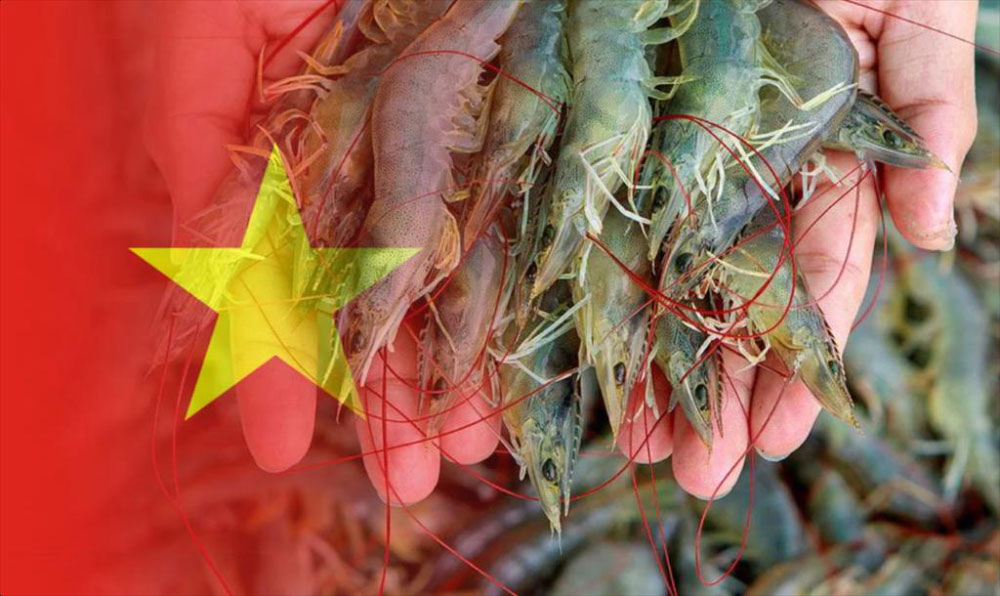Vietnam Seafood
Vietnamese shrimp asserts its quality in the EU market
The EU is currently Vietnam’s fourth largest shrimp import market, accounting for 13% of Vietnam’s total shrimp export value. In this market, Vietnamese shrimp faces fierce competition from heavyweights from Asia such as India and Thailand, and from Latin America like Ecuador and Brazil. This demonstrates that Vietnamese shrimp is increasingly affirming its quality and meeting the high standards of the EU market.
In the first nine months of this year, Vietnam’s shrimp exports to the EU reached over $360 million, a 15% increase compared to the same period last year. In the first nine months of 2024, shrimp exports to the EU only declined in February and March, while exports in the remaining months recorded double-digit growth.
The average export price of Vietnamese shrimp to the EU, especially the price of whiteleg shrimp, has also recorded continuous growth since June this year. This indicates that the EU market still has a high demand for Vietnamese shrimp, especially whiteleg shrimp.
With strict standards for quality and food safety, the EU market has become a crucial benchmark for the competitiveness of Vietnam’s shrimp industry. From minimizing environmental impacts during farming to ensuring clear traceability and animal welfare, each exported shrimp must meet the highest standards.
In the first nine months of this year, among Vietnam’s seafood export products, shrimp brought in the highest export turnover of $2.8 billion, up 11% compared to the same period in 2023. Shrimp exports to major markets (US, EU, China, etc.) all recorded positive growth.
In the first nine months of this year, Vietnam’s shrimp exports to the US reached $566 million, a 9% increase compared to the same period last year. In the US, the Federal Reserve has cut interest rates in its September meeting and is expected to cut rates two more times in November and December, which will help boost consumption due to lower borrowing costs, especially as the number of jobs is increasing. This is beneficial for exporting goods to this market.
According to data from the US National Oceanic and Atmospheric Administration (NOAA), in the US market, in August 2024, Vietnamese shrimp exports were more positive than other competitors such as India and Ecuador when shrimp exports from these sources to the US all decreased.
The average import price of shrimp from Vietnam to the US increased from $4.59/pound in July 2024 to $4.95/pound in August 2024.

Vietnam’s shrimp exports to China and Hong Kong increased by 77% in September. In the first nine months, shrimp exports to this market increased by 29% to $585 million. China is introducing many solutions to increase consumer spending, which supports shrimp imports into this market. In 2024, frozen shrimp exports are still affected by the trend of prices not recovering significantly, along with the pressure of competitive selling prices with Ecuadorian and Indian shrimp. However, processed shrimp from Vietnam still has a good position in the markets. Therefore, as of the end of September, exports of processed whiteleg shrimp still increased by nearly 10%, while exports of frozen whiteleg shrimp increased slightly at 4.5%.
The price of Vietnamese raw shrimp has been more positive since July this year. The prices of raw whiteleg shrimp of sizes 50, 80, and 100 pcs/kg have increased continuously from July to September. The average export price of Vietnamese shrimp to the US and EU has also increased since June. Export prices to China and Japan have also recorded a slight increase.
It is expected that the price of raw shrimp will continue to be positive in the fourth quarter, although there may be a local shortage of raw materials as this is the period when China will increase purchases for the Lunar New Year and New Year holidays, and businesses need raw materials to boost production for year-end orders.
(Source: https://seafood.vasep.com.vn/)



 Tiếng Việt
Tiếng Việt